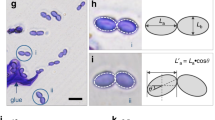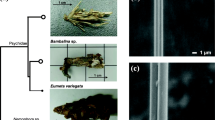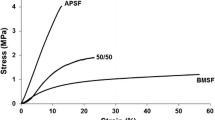Abstract
Theriodopteryx ephemeraeformis commonly known as bag worms produce ultrafine silk fibers that are remarkably different than the common domesticated (Bombyx mori) and wild (Saturniidae) silk fibers. Bag worms are considered as pests and commonly infect trees and shrubs. Although it has been known that the cocoons (bags) produced by bag worms are composed of silk, the structure and properties of the silk fibers in the bag worm cocoons have not been studied. In this research, the composition, morphology, physical structure, thermal stability, and tensile properties of silk fibers produced by bag worms were studied. Bag worm silk fibers have considerably different amino acid contents from those of the common silks. The physical structure of the bag worm silk fibers is also considerably different compared with B. mori and common wild silk fibers. Bag worm’s silk fibers have lower tensile strength (3.2 g/denier) and Young’s modulus (45 g/denier) but similar breaking elongation (15.3%) compared with B. mori silk. However, the tensile strength and Young’s modulus of bag worm fibers are similar to those of the common Saturniidae wild silk fibers. Bag worm silk fibers could be useful for some of the applications currently using the B. mori and wild silk fibers.







Similar content being viewed by others
References
Robson RM (1998) In: Lewin M, Pearce EM (eds) Handbook of fiber chemistry. Marcel Dekker Inc, New York
Sen K, Babu MK (2004) J Appl Polym Sci 92:1080
Sen K, Babu MK (2004) J Appl Polym Sci 92:1098
Kameda T, Tsukada M (2006) Macromol Mater Eng 291:877
Acharya C C, Ghosh SK, Kundu SC (2009) Acta Biomater 5(1):429
Kearns V, MacIntosh AC, Crawford A, Hatton PV (2008) Top Tissue Eng 4:1
Takeshita H, Ishida K, Kamiishi Y, Yoshii F, Kume T (2008) Macromol Mater Eng 283:126
Kakati LN, Chutia BC (2009) Trop Ecol 50(1):137
Razafimanantosoa T, Ravoahangimalala OR, Craig CL (2006) Madag Conserv Dev 1(1):34
Acharya C, Ghosh SK, Kundu SC (2008) J Mater Sci Mater Med 19:2827
Reddy N, Yang Y (2010) Int J Biol Macromol 46(4):419
Sutherland TD, Weisman S, Trueman HE, Sriskantha A, Trueman JWH, Haritos VS (2007) Mol Biol Evol 24(11):2424
Brown SA, Ruxton GD, Humphries A (2004) J N Am Benthol Soc 23(4):771
Saravanan D (2006) J Text Appar Technol Manag 5(1):1
Rhainds M, Davis DR, Price PW (2009) Annu Rev Entomol 54:209
Weiss HB (1914) Psyche 21(1):45
Bhat NV, Nadiger GS (1980) J Appl Polym Sci 25:921
Perez-Rigueiro J, Elices M, LLoraca J, Viney C (2001) J Appl Polym Sci 82:53
Rajkhowa R, Gupta VB, Kothari VK (2000) J Appl Polym Sci 77:2418
Shaw JTB, Smith SG (1961) Biochem Biophys Acta 52:305
Craig CL, Hsu H, Kaplan D, Pierce NE (1999) Int J Biol Macromol 24:109
Warwicker JO (1960) J Mol Biol 2:350
Zhou C, Confalonieri F, Jacquet M, Perasso R, Li Z, Janin J (2001) Proteins Struct Funct Bioinf 44:119
Gage LP, Manning RF (1980) J Biol Chem 255(19):9444
Lotz B, Cesari C (1979) Biochemie 61:205
Zhao C, Yao J, Masuda H, Kishore R, Asakura T (2003) Biopolymers 69:253
Dobb MG, Frazer RDB, Macrae TP (1967) J Cell Biol 32:289
Acknowledgements
The authors acknowledge the financial support from the Agricultural Research Division at the University of Nebraska-Lincoln, USDA Hatch Act and Multi-State Project S1026 for completing this research.
Author information
Authors and Affiliations
Corresponding author
Rights and permissions
About this article
Cite this article
Reddy, N., Yang, Y. Structure and properties of ultrafine silk fibers produced by Theriodopteryx ephemeraeformis . J Mater Sci 45, 6617–6622 (2010). https://doi.org/10.1007/s10853-010-4752-5
Received:
Accepted:
Published:
Issue Date:
DOI: https://doi.org/10.1007/s10853-010-4752-5




